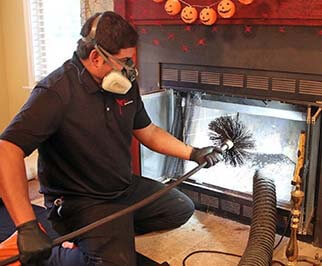
How a Carpet Cleaner Transforms Your Floors
Carpet cleaners do more than freshen up your floors in Topanga — they dive deep into fibers to remove dirt, bacteria, and stains that regular vacuuming can’t touch. Whether you’re a homeowner battling pet messes or a facility manager in charge of large commercial spaces, understanding how a carpet cleaner works can help you choose the right tool and use it effectively. For better results, many homeowners rely on
to extend their carpet’s lifespan.
Let’s break down how these powerful machines operate and how they can keep your carpets looking and feeling brand new.
The Deep-Clean Science Behind Carpet Cleaners
A carpet cleaner works by combining cleaning solutions, water, and mechanical action to lift and remove debris from carpet fibers. This multi-step process leaves your carpets not only visibly cleaner but also more hygienic.
Prepping the Carpet
Before cleaning begins, it’s best to vacuum the carpet to remove surface debris. Some users apply a pre-spray treatment to break down heavy soil or oily residues, allowing the carpet cleaner to perform more efficiently.
Solution Injection and Agitation
At the heart of any carpet cleaner is its spray-and-scrub mechanism. Here’s how it works:
- The machine sprays a heated or cold water solution mixed with a carpet-safe detergent into the carpet.
- Simultaneously, motorized or manual brushes agitate the fibers, breaking apart dirt and stains.
- This action dislodges particles trapped in deep layers of the pile.
Powerful Suction and Water Extraction
After agitation, the carpet cleaner’s suction system kicks in:
- Dirty water, along with grime and cleaning solution, is sucked into a separate recovery tank.
- The powerful vacuum helps lift moisture from the carpet, reducing drying time significantly.
Innovative Features That Enhance Carpet Cleaners
Today’s carpet cleaners offer a variety of features tailored to both residential and commercial users. These enhancements help boost cleaning power and efficiency.
Heated Cleaning Technology
Some advanced models heat the water internally. Heated water:
- Boosts detergent effectiveness
- Breaks down oils and grease more easily
- Enhances stain removal in high-traffic areas
Low-Flow Systems
These systems use less water, allowing for:
- Faster drying times
- Less risk of mold or mildew growth
- Eco-friendlier operation
Adjustable PSI and Vacuum Pressure
In professional carpet cleaner units, users can control the pounds per square inch (PSI) and vacuum lift to suit different carpet thicknesses and soil levels.
Eco-Safe Cleaning Solutions
Maintaining clean carpets year-round is easier with the help of
. Many carpet cleaner brands now promote:
- Biodegradable detergents
- Non-toxic solutions are safe for pets and children
- Allergen-free options for sensitive environments
Types of Carpet Cleaners: Which One Do You Need?
Pairing your deep clean with
can help preserve texture and color over time. Depending on your cleaning needs, here are a few popular types:
- Upright Carpet Cleaners: Best for home users; easy to operate
- Canister Models: Offer flexibility for upholstery and stairs
- Commercial Extractors: Built for high-volume jobs; more powerful motors and higher capacity
- Portable Carpet Cleaners: Perfect for spot cleaning and small areas
Carpet Cleaning Benefits That Go Beyond Aesthetics
Regular use of a carpet cleaner in Topanga can significantly improve your environment. Here’s what you gain:
- Extended carpet lifespan
- Improved indoor air quality
- Elimination of allergens and bacteria
- Removal of tough stains and odors
- Enhanced room aesthetics
Cleaning Frequency Recommendations
| Traffic Level | Cleaning Frequency |
|---|---|
| Low (e.g., bedrooms) | Every 12 months |
| Moderate (e.g., living rooms) | Every 6–8 months |
| High (e.g., hallways, commercial areas) | Every 3–6 months |
Pro Tips for Using a Carpet Cleaner Effectively
Make the most of your carpet cleaner by following these expert strategies:
- Use hot water when possible for deeper cleaning
- Clean in overlapping passes to ensure uniformity
- Avoid over-wetting, which can lead to slow drying
- Rinse cycle with clean water for soap residue removal
- Let carpets dry completely before replacing furniture
Frequently Asked Questions
What’s the difference between a vacuum and a carpet cleaner? A vacuum picks up dry debris; a carpet cleaner injects cleaning solution and removes embedded dirt using water and suction.
Can I use a carpet cleaner on upholstery? Yes — many models come with attachments specifically for cleaning furniture, car seats, and stairs.
Do I need to use a branded cleaning solution? While not always necessary, using manufacturer-recommended products ensures compatibility and better performance.
Is carpet cleaning safe for pets? Especially when using eco-friendly, non-toxic detergents designed for pet households.
How long does it take for carpets to dry? Drying time varies but generally takes between 4–12 hours. Low-moisture systems can reduce this to 2–4 hours.
Why Every Home and Business Needs a Reliable Carpet Cleaner
Whether you’re aiming for spotless floors at home or maintaining professional standards in a commercial space, a high-quality carpet cleaner is your secret weapon. With the right equipment and cleaning regimen, you’ll preserve your investment and create a cleaner, healthier, and more searchable environment.







